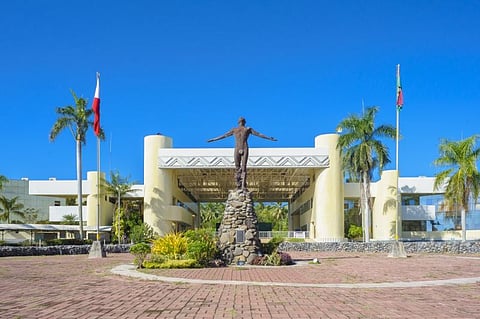

THE University of the Philippines-Philippine Genome Center (UP-PGC) satellite facility in UP-Mindanao (UP-Min) is expected to conduct whole-genome sequencing (WGS) to detect Covid-19 variants before the end of the year.
Dr. Rachel Joy Pasion, DOH-Davao Regional Epidemiology Surveillance Unit head, said in a virtual presser on Tuesday, August 31, 2021, that the UP-Min PGC is targeted to operate by November this year.
Based on their initial meetings, Pasion said the operation of UP-Min PGC is still waiting for funding for the operation of the facility.
"It needs a lot of funds. Depende sa funding na maibababa sa atin ditto sa region kasi 'yun lang ang hinihintay natin (This will depend on the funding that will be given to the region, which we are currently awaiting). Then next, we'll do the planning because depending on the fund that they will be giving us, 'yun rin po ang pwede natin maibigay sa (this will be our fund allocation to) UP Mindanao," the health official said during the DOH-Davao virtual presser.
The funding, she said, would include human resources and equipment for WGS.
She said genome sequencing is a tedious process, which requires manpower.
Pasion did not specify the exact amount, but the operation of the satellite facility would require millions of pesos.
Aside from UP-Min, Pasion said they are also eyeing Southern Philippines Medical Center (SPMC) as a satellite area for WGS.
Dr. Lyre Murao, PGC Mindanao program director and professor of virology at UP Mindanao, said in a previous presser that they expect a turnaround time of one to two weeks per batch of samples that will be processed for WGS.
Samples sent to the PGC in UP Diliman from Mindanao had a month-long turnaround.
PGC Mindanao targets to gather samples from all six regions of Mindanao and, in fact, has samples already for processing.
DOH Undersecretary Maria Rosario Vergeire said in a press conference Friday, August 27, that the UP-PGC satellite facilities in the Visayas and Mindanao will soon be able to conduct WGS with the approval of a P295.7-million budget for their operations.
Vergeire said this will expand the UP-PGC’s capacity to conduct genome sequencing.
At present, the UP-PGC is capable of sequencing approximately 750 samples a week. When the Visayas and Mindanao facilities become fully operational, each will be able to sequence 350 samples a week while the PGC Diliman will double its output to 1,500 samples, for a total of 2,200 samples a week.
Vergeire said logistical challenges have limited the capability of DOH regional units in the Visayas and Mindanao to regularly send samples for sequencing in the UP-PGC in Diliman, Quezon City.
“So this expansion will definitely help us sequence more samples in the VisMin area,” Vergeire said. PGC Visayas is located within the UP Visayas campus in Miagao, Iloilo while PGC-Mindanao is located within UP Mindanao in Davao City.
Strengthening the UP-PGC’s biosurveillance capacity will enhance not only the government’s coronavirus disease 2019 (Covid-19) response, but also the capability to address other disease outbreaks in the future, she added.
Aside from detecting variants of Sars-CoV-2, genomic biosurveillance plays a big role in determining causes of outbreaks, tracking how a virus is transmitted, and complementing disease surveillance in guiding the overall public health response beyond the Covid-19 pandemic.
Vergeire reiterated that whole-genome sequencing is not being used as a point of care intervention.
“Local government units don’t need to wait for sequencing results before undertaking Covid-19 response measures. Case management protocols should be implemented as soon as an individual test positive,” she said. (With reports from SunStar Philippines)